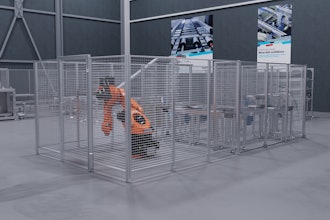Supply chain management has always been important, and it's a big part of any successful just-in-time delivery system. The dream of true real time management, alas, has remained elusive. New technology may finally bring the dream to life. Here are some steps to making real time supply chain management a reality:
- Connect supply chain management to the rest of the company. Instead of having traditional separated shipping and receiving departments, integrate its operations with those of the rest of the company. Ensure all managers can see how the supply chain is performing at any time. Also make sure that the sales force is tuned into the logistics of the operation. This will allow the company's various divisions to avoid gaffes caused by not knowing which merchandise is where.
- Set up a demand-driven supply chain. Use market research, social media and point-of-sale (POS) information to predict the demand for your products and the components used to make them. Companies using a system like this can respond to demand changes in real time, while those who use less-immediate stats can find themselves either running out of stock or being stuck with extra product.
- Outfit the company fleet with electronic on-board recorders (EOBRs). EOBRs do much more than log a driver's hours. They include GPS systems, so it's easy to see where each truck is and predict when it'll arrive. Companies will find it much easier to meet demands when they know where the cargo is. Using an EOBR will also make it easier to respond to sudden glitches in the system such as traffic jams caused by accidents or unexpected construction.
- Ensure efficiency. Many companies develop logistics and other systems that either start out with needless complexity or become spaghetti-like behemoths over time. Guard against this by making sure that every aspect of the system does what it has to in an efficient way. If employees are consistently adding on bits and pieces, the solution is not to forbid them from doing so – they’re doing it to make it possible to do their assigned tasks. The real answer is to integrate those bits and pieces into the main system so they don't have to be duct-taped onto operations by frustrated workers.
By using a good real time supply chain management system, companies can avoid the inefficiency of having to stock warehouses months in advance. Problems caused by running out of materials or products will also be abated when it's possible to get a good look at what is going on at any particular moment. Predictions that use crude measures like reports of what sold last year during the same season are no longer competitive in today's market – the things that sold great last year can easily be today's duds.
Using social media and reports of what is actually selling right now will allow companies to set things up so that they have the right products or materials in stock when needed. Once this information is collected, follow up by improving the company's logistics system with more efficient practices, tracking devices like EOBRs and individual package monitoring systems and adaptive management practices that allow for correction of deficiencies on the fly. This way, the company will know what it needs to do and be able to do it without wasting time or money.
Danielle M. writes on behalf of OmniTracs, Inc. She is a part time student at The Kelley School of Business studying supply chain management and marketing. She has a special interest in how technology can piece together with lean manufacturing principles to make supply chain management more efficient. She enjoys studying how businesses have incorporated relatively small technologies like EOBRs that start huge, industry-wide changes.






















